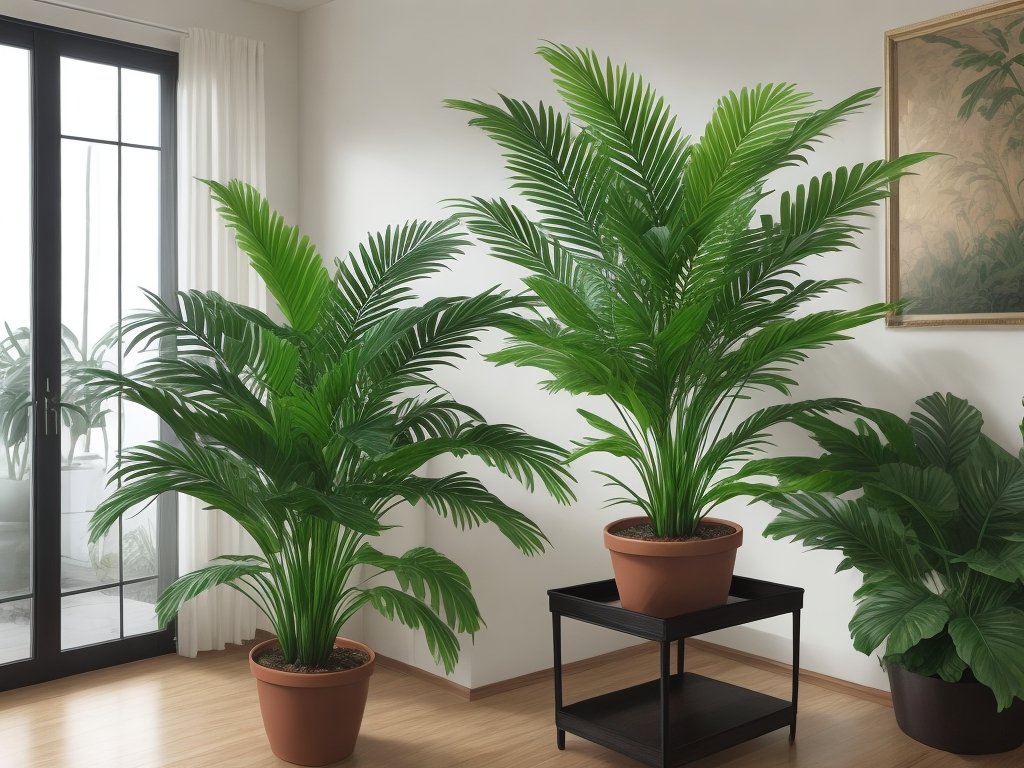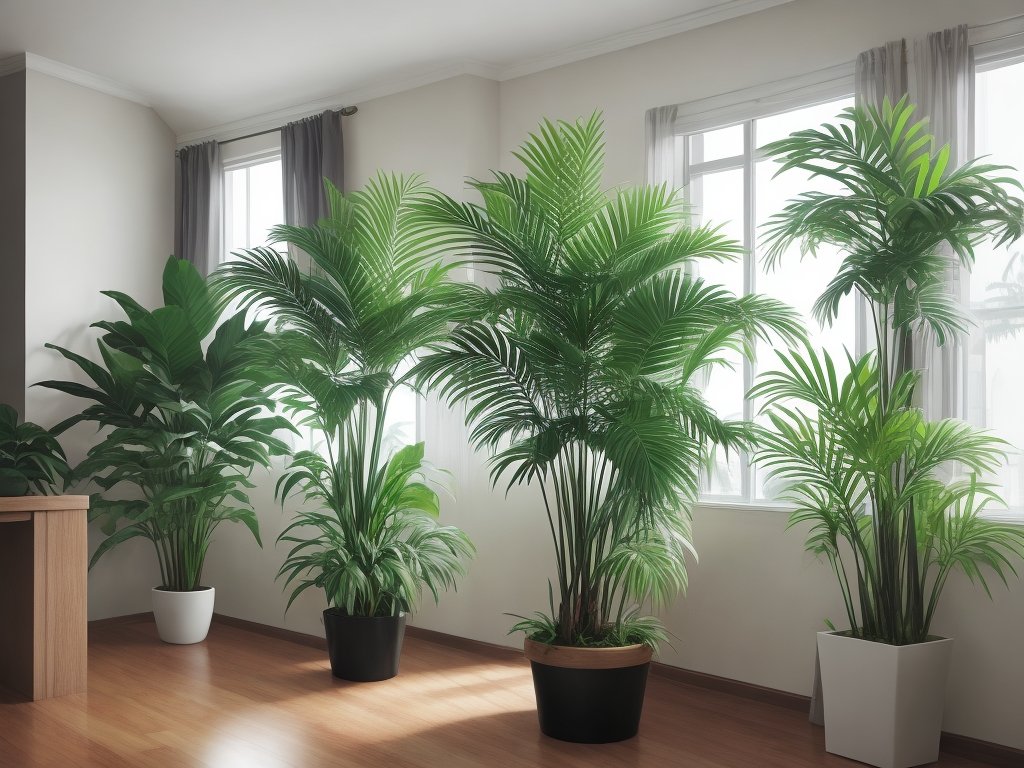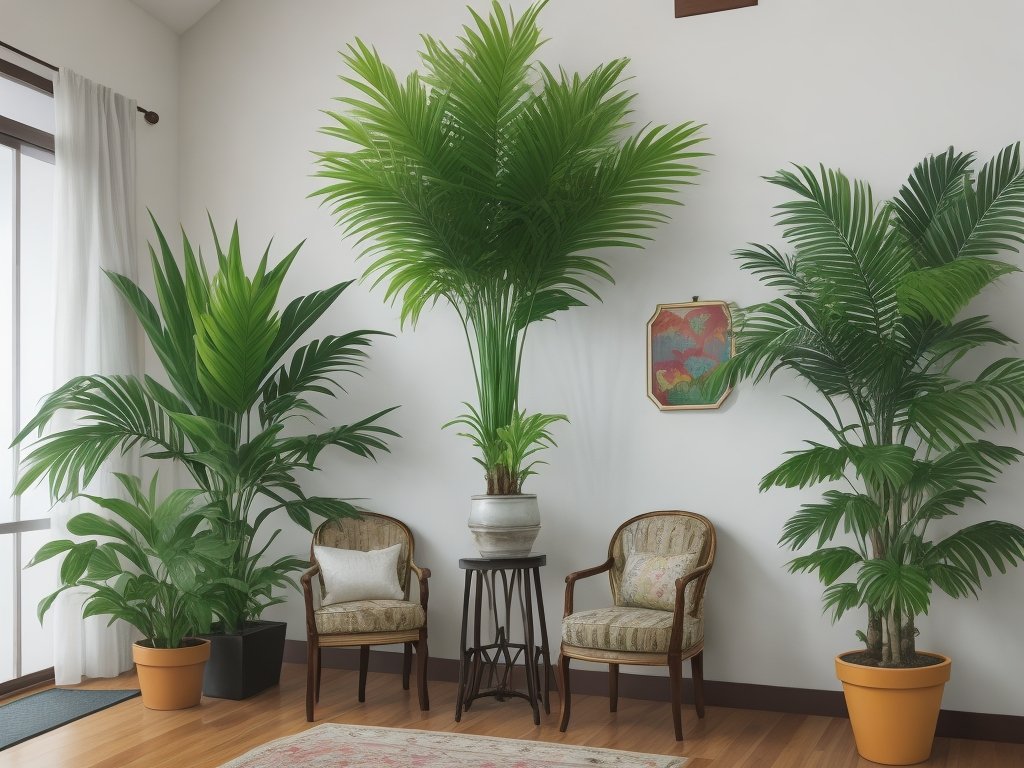Parlor Palm Vs. Other Indoor Plants: A Comparison
Key Takeaways:
- Parlor palm is an excellent choice for indoor plants due to its ability to thrive in low light conditions.
- Compared to other indoor plants, parlor palm requires less water and attention, making it a low-maintenance option.
- Parlor palm has been found to improve indoor air quality by removing toxins and increasing humidity levels.
- When it comes to aesthetic appeal, parlor palm adds a touch of elegance and tropical vibes to any indoor space.
Are you looking to bring some greenery into your home but unsure which indoor plant to choose?
Well, you’re in luck because today we’re going to compare the parlor palm with other common indoor plants, helping you make the best choice for your space.
The parlor palm, a popular choice for indoor gardening, offers a touch of elegance and a tropical vibe.
However, if you’re looking for a low-maintenance alternative, the snake plant might be the one for you.
And if air purification is a top priority, the spider plant and peace lily are excellent options.
But wait, there’s more! We’ll also explore factors to consider when choosing indoor plants and delve into the amazing benefits they bring to your home.
So, whether you’re a beginner or a seasoned plant parent, keep reading to discover the perfect indoor plant for you.
| Feature | Parlor Palm | Other Indoor Plants |
|---|---|---|
| Watering | Every 7-10 days | Varies; depends on plant species |
| Light Requirements | Indirect or filtered light | Varies; some require full sun, others prefer shade |
| Size | Up to 6 feet (1.8 meters) | Varies; some stay compact, others can grow up to 10 feet |
| Difficulty | Easy to maintain | Varies; some require more attention and specific care |
| Air Purification | Excellent; removes toxins from the air | Varies; some plants have air purification properties |
Parlor palm vs. other common indoor plants
Parlor palm offers a different look and feel compared to other common indoor plants.
Parlor palm: A popular choice for indoor gardening
Parlor palm is a popular choice for indoor gardening because it is low-maintenance and can tolerate low light conditions.
Its compact size makes it suitable for smaller spaces, and its lush, green foliage adds a touch of natural beauty to any room.
Plus, it helps improve air quality by removing toxins from the air.
Snake plant: A low-maintenance alternative
Snake plants are an excellent low-maintenance alternative to the parlor palm.
They require minimal care and can thrive in a variety of lighting conditions.
Additionally, snake plants are drought-tolerant and can go without water for extended periods.
They are known for their air-purifying abilities, making them a great choice for indoor spaces.
Spider plant: A versatile and air-purifying option
Spider plants are a versatile indoor plant option that not only adds beauty to your space but also helps in purifying the air.
They are known for their air-cleaning properties, removing toxins like formaldehyde and benzene.
Spider plants are easy to care for, making them a great choice for beginners.
They thrive in bright, indirect light and require regular watering.
Spider plants also produce baby plantlets that can be propagated and shared with others.
So, if you’re looking for a plant that adds visual appeal and improves the air quality in your home, the spider plant is a great option to consider!
Peace lily: A flowering plant with air-cleaning properties
Peace lilies are beautiful flowering plants that not only add to the aesthetic appeal of your indoor space, but also have air-cleaning properties.
They are known to remove toxins like formaldehyde, benzene, and carbon monoxide from the air, making it healthier for you to breathe.
Pothos: A trailing plant suitable for hanging baskets
Pothos is a trailing plant that is perfect for hanging baskets. It has beautiful, vibrant green leaves that cascade down, creating a stunning display wherever you choose to hang it.
Pothos is a low-maintenance plant, making it a great choice for beginners or those with busy schedules.
It thrives in medium to bright indirect light and only needs to be watered when the top inch of soil feels dry. With its trailing vines and easy care, Pothos is a fantastic addition to any indoor space.

Rubber plant: A statement-making addition to indoor spaces
Rubber plants are a fantastic addition to indoor spaces because they make a bold statement. Their large, glossy leaves add a touch of elegance and drama to any room.
Plus, they can grow quite tall, reaching heights of 8 feet or more, making them a real focal point.
The rubber plant’s dark green foliage creates a striking contrast against light-colored walls or furniture, instantly enhancing the overall aesthetic of your space. Whether placed in a living room, bedroom, or office, a rubber plant is sure to draw attention and make a statement.
Factors to consider when choosing indoor plants
When choosing indoor plants, consider factors such as light requirements, watering needs, space availability, and maintenance and care.
Light requirements
Different indoor plants have varying light requirements. Parlor palms, snake plants, spider plants, and peace lilies prefer bright indirect light, but can tolerate low light conditions.
Pothos and rubber plants thrive in moderate to bright indirect light.
Consider the available light in your space and choose plants accordingly.

Watering needs
Watering needs for indoor plants vary depending on the type of plant and its environment.
Some plants, like parlor palms and snake plants, prefer drier soil and should be watered sparingly.
Others, such as peace lilies and spider plants, need more moisture and should be watered regularly.
Pothos and rubber plants fall somewhere in between.
To determine when to water, check the soil moisture level by sticking your finger about an inch into the soil.
Water when the top inch feels dry.
Remember, it’s always better to underwater than overwater.
Space availability
The space availability is an important factor to consider when choosing indoor plants.
You need to consider the size of your space and whether it can accommodate the plant’s growth.
Some plants, like the parlor palm or snake plant, are compact and suitable for small spaces.
Others, like the rubber plant or pothos, need more room to spread out.
Make sure you choose a plant that fits well in your available space to avoid overcrowding and promote healthy growth.
Maintenance and care
Proper maintenance and care are essential for the health and longevity of indoor plants.
Here are some key tips to keep in mind:
- Watering: Check the moisture levels of the soil regularly and water accordingly. Avoid overwatering or letting the soil dry out completely.
- Light: Different plants have different light requirements. Place your indoor plants in a spot that provides the right amount of light for their specific needs.
- Pruning: Trim any dead or yellowing leaves to promote new growth and maintain a neat appearance. Pruning also helps prevent diseases and pests.
- Fertilizing: Indoor plants generally require less frequent fertilization compared to outdoor plants. Use a balanced, water-soluble fertilizer and follow the instructions on the packaging.
- Cleaning: Dust can accumulate on indoor plant leaves, hindering their ability to absorb light. Wipe the leaves gently with a soft cloth or give them a shower to remove dust and keep them clean.
- Pest control: Regularly check for pests such as aphids, mealybugs, and spider mites. If infested, treat the affected plants with an appropriate insecticide or opt for natural remedies like neem oil or insecticidal soap.
- Temperature and humidity: Maintain suitable temperature and humidity levels for your indoor plants. Avoid placing them in drafty areas or near heating or cooling vents.
Benefits of having indoor plants
Having indoor plants offers numerous benefits, such as improved air quality and stress reduction. They can also enhance productivity, add aesthetic appeal, and enhance your mood.
Improved air quality
Improved air quality is one of the key benefits of having indoor plants. Plants naturally remove pollutants from the air through a process called phytoremediation.
They absorb harmful gases like carbon dioxide and release oxygen, helping to purify the air we breathe.
This can lead to a healthier and more comfortable indoor environment, reducing the risk of respiratory issues and promoting overall well-being.
Stress reduction and mental health benefits
Indoor plants can provide numerous stress reduction and mental health benefits. They have a calming effect, promote relaxation, and reduce anxiety.
Plants also help to improve mood and increase feelings of happiness.
In addition, caring for plants can be therapeutic and provide a sense of purpose and fulfillment. They create a soothing environment that can enhance overall mental well-being.
Increased productivity
Increased productivity is one of the benefits of having indoor plants. Studies have shown that being surrounded by greenery can improve focus, concentration, and creativity, leading to increased work efficiency.
Plants can also help reduce stress and create a calm and positive work environment.

Aesthetic appeal and mood enhancement
Aesthetic appeal and mood enhancement are important factors to consider when choosing indoor plants. Plants with lush foliage, colorful flowers, or unique textures can enhance the visual appeal of any space.
Additionally, being surrounded by greenery has been shown to improve mood, reduce stress, and promote a sense of calm and well-being.
Incorporating indoor plants into your home or office can create a more soothing and inviting environment.
Frequently Asked Questions
Can parlor palms survive in low light conditions?
Parlor palms can survive in low light conditions, making them an excellent choice for indoor spaces with limited natural light.
They have adapted to thrive in shady environments, so they can still grow and remain healthy even in areas with little direct sunlight.
However, it’s important to note that while they can tolerate low light, they still need some indirect light to grow properly.
Placing them near a bright window or providing them with artificial light can help ensure their optimal growth.
How often should indoor plants be watered?
Indoor plants should be watered when the top inch of soil feels dry to the touch. This can vary depending on the plant species, size of the pot, and the humidity in your home.
Check the soil regularly and adjust your watering schedule accordingly.
Overwatering can be just as harmful as underwatering, so it’s important to find the right balance. Some plants prefer slightly drier conditions, while others need more moisture.
Remember to also consider factors such as the amount of light the plant receives and the season of the year, as these can affect the plant’s water requirements.
Can indoor plants be toxic to pets?
Yes, indoor plants can be toxic to pets.
Some common plants like lilies, philodendrons, and aloe vera can be harmful to cats and dogs if ingested.
It’s important to research plants before bringing them into your home and keep them out of reach of your furry friends.
Which indoor plants are best for beginners?
Parlor palm, snake plant, spider plant, peace lily, pothos, and rubber plant are some of the best indoor plants for beginners.
They are low maintenance, can tolerate a variety of light conditions, and require minimal watering.
These plants are great choices for beginners looking to add some greenery to their indoor spaces.
Final Verdict
When it comes to indoor plants, the parlor palm is definitely a popular choice for its elegant appearance, air-purifying properties, and easy maintenance. However, there are other great alternatives to consider, such as the snake plant, spider plant, peace lily, pothos, and rubber plant, each with their own unique benefits.
When choosing indoor plants, it’s important to consider factors like light requirements, watering needs, space availability, and maintenance.
Overall, incorporating indoor plants into your living space can provide numerous benefits, including improved air quality, stress reduction, increased productivity, and enhanced aesthetic appeal. So why not bring a touch of nature indoors and experience these amazing benefits for yourself?







